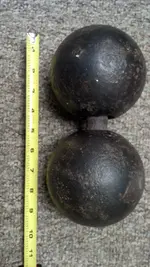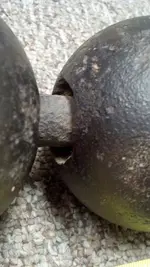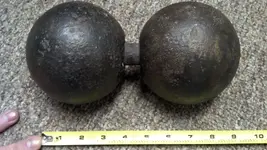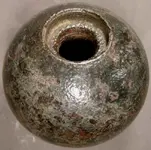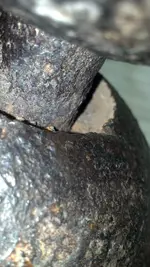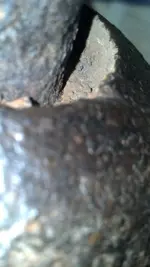Gonna try this again as I posted this a few years ago but never got a definitive answer.
My dad found this in one our fields about 30 years ago, this is Central Illinois corn and soybean country. We thought it was a part off of an old steam engine or something but no one seems to know. It looks like cannon balls but the distance of the bar seems way to short to be bar shot. They are about 4.5" in diameter and weigh approx. 17# total. There is a visible case seam on one of the spheres but no specific wear pattern which would suggest that they were rolled. There were obviously no naval battles near or any civil war battles nearby, only small confrontations with the native Americans as far as I'm aware of.
To me, the most logical suggestion is some sort of crusher balls (insert joke here...lol) used in mining (limestone?). There is no visible signs of pattern wear. There are limestone mines about 30 miles north of this location.
I would really like to find out what they are...been driving me nuts for over 20 years...lol
rangerboats2005@yahoo.com
My dad found this in one our fields about 30 years ago, this is Central Illinois corn and soybean country. We thought it was a part off of an old steam engine or something but no one seems to know. It looks like cannon balls but the distance of the bar seems way to short to be bar shot. They are about 4.5" in diameter and weigh approx. 17# total. There is a visible case seam on one of the spheres but no specific wear pattern which would suggest that they were rolled. There were obviously no naval battles near or any civil war battles nearby, only small confrontations with the native Americans as far as I'm aware of.
To me, the most logical suggestion is some sort of crusher balls (insert joke here...lol) used in mining (limestone?). There is no visible signs of pattern wear. There are limestone mines about 30 miles north of this location.
I would really like to find out what they are...been driving me nuts for over 20 years...lol
rangerboats2005@yahoo.com

